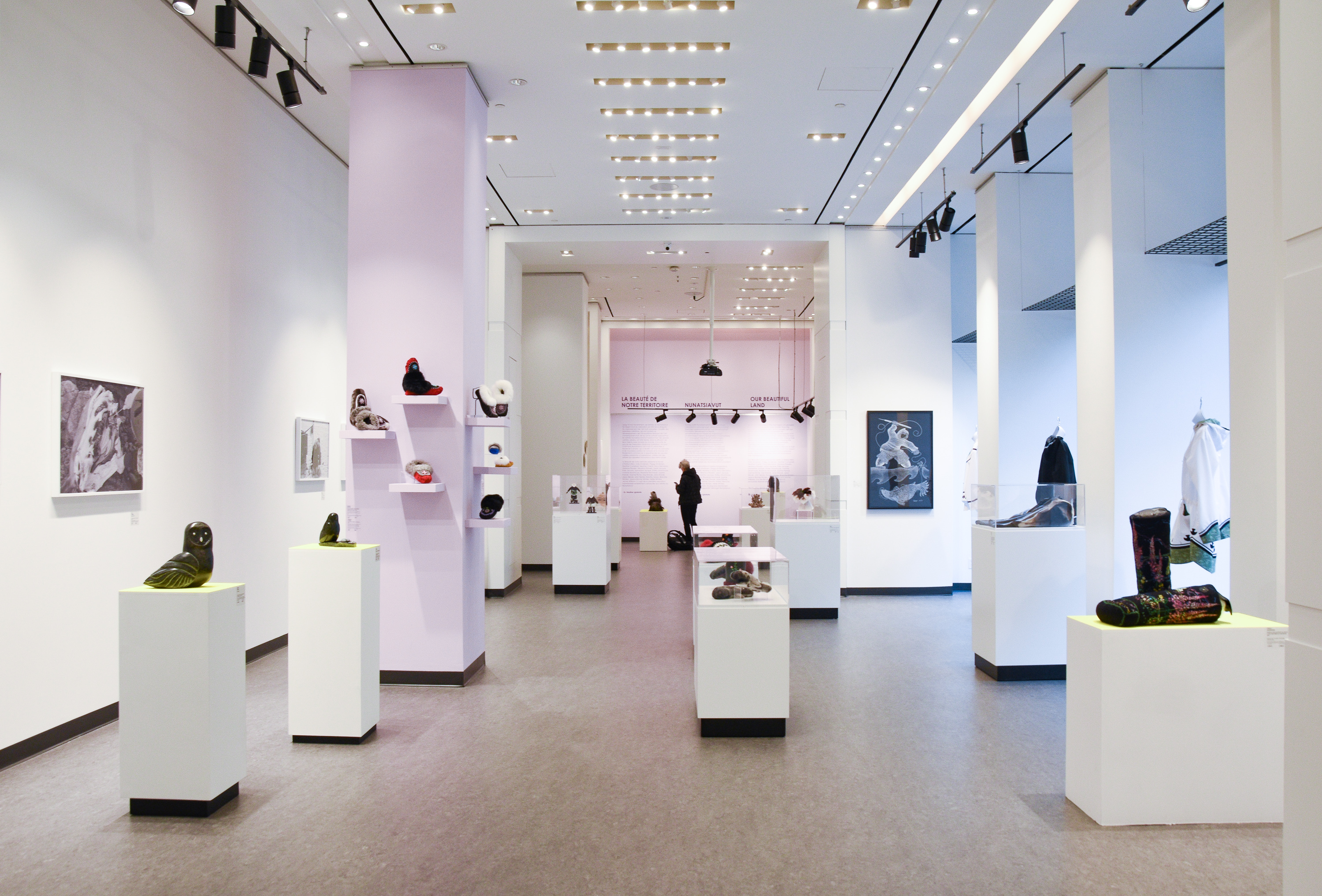New exhibition at La Guilde offers a cultural and political glimpse at the region’s landscape
Curated by Dr. Heather Igloliorte, curator and professor at Concordia University, Nunatsiavut Our Beautiful Land, is presented in partnership with Concordia University, as part of the 21st Inuit Studies Conference.
The exhibition, on view at La Guilde, a gallery-slash-museum in downtown Montreal, features over 40 works, and 25 artists from Nunatsiavut, the Inuit region of Labrador. Specializing in Inuit and First Nations art, La Guilde is a nonprofit organization that houses a large collection of contemporary Indigenous art.
Nunatsiavut Our Beautiful Land explores themes of land and territory. The broad theme allows artists to interpret it in whichever way they felt necessary, be it through materiality, medium, or the subject. Whether it be through sculpture, photography or paintings, a light is shone on the lesser-known region. While some artists explore the theme through the materials used, others approach the topic through themes of environmentality, colonization, and tradition.
Photo by Cecilia Piga.
Jason Sikoak, a multimedia artist and current Studio Arts undergraduate student at Concordia University, creates works that are simultaneously cultural and political. Seal Hunter demonstrates a figure standing above a sheet of ice, as they hunt for a seal below them. The illustration, drawn in white, is meticulously detailed and stands out against the black paper on which it is drawn. While more traditional in content, the contemporaneity of the piece reminds the viewer of an ongoing way of life, hidden to those living in unceded urban areas.
Through a more material approach, sculptor and carver John Terriak works primarily with a variety of materials like soapstone, serpentine, and whalebone. Mother Owl with Nest and Eggs is a carving of an owl with three miniature eggs laid out before it. Carved from soapstone, limestone, and serpentine, the work contains contrasting qualities; the dark sleek body of the owl, the tiny speckled eggs. Realistic and spiritual, the sculpture demonstrates the beauty of the Nunatsiavut region’s natural resources, as well as its culture.
Photo by Cecilia Piga.
Eldred Allen, a photographer who works with drones, creates works that immerse the viewer within the captured landscape. Allen’s Caribou Lost in Shadow depicts a lone caribou in a field, highlighting the reality of climate change in Northern and Arctic regions. The isolation is emphasized by the intent focus on the stray caribou- all that is excluded from the frame is everything the caribou is isolated from; that is the impression left on the viewer.
On the other hand, Allen’s Skull of Harp Seals captures dozens of harp seals-a type of seal native to the Arctic-swimming in a group, their silver-tone fur contrasting sharply against the deep blue water.
While each artist explores the beauty of their land-and heritage-through an entirely different lens, they approach the subject with great sentimentality. Whether it be through photography or craft, the artists remind the viewer of longstanding history and cultural significance.
Nunatsiavut Our Beautiful Land is on display at La Guilde, at 1356 Sherbrooke St. W., until Nov. 24. The gallery is open Tuesday to Friday, from 10 a.m. to 6 p.m., weekends from 10 a.m. to 5 p.m., and Wednesdays from 10 a.m. to 9 p.m.
